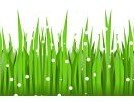When it comes to creating a visually appealing and welcoming exterior for your home, the importance of landscaping your front yard cannot be underestimated. A well-designed front yard can enhance the curb appeal, increase the value of your property, and provide an inviting space for you and your guests. From carefully selecting the right plants and flowers to installing vibrant lighting fixtures and elegant pathways, every aspect of landscaping front yard plays a crucial role in transforming an ordinary space into a captivating and breathtaking entrance. With a plethora of design options and techniques available, this article will guide you through the key elements of landscaping front yard, enabling you to make informed decisions and create a stunning outdoor oasis that truly reflects your unique style and personality.

Initial Planning
When it comes to landscaping your front yard, there are several important factors to consider during the initial planning phase. By taking the time to assess the space, determine your needs and preferences, set a budget, and research local regulations and permits, you can ensure that your landscaping project starts off on the right track.
Assessing the Space
Before diving into any landscaping project, it’s important to assess the space you have to work with. Take measurements of your front yard and note any existing features or structures that may impact the design. Consider the layout of your home and how the landscaping will complement its architectural style. By understanding the physical constraints and opportunities of your front yard, you can create a cohesive and well-balanced design.
Determining Your Needs and Preferences
When planning your front yard landscaping, it’s essential to consider your personal needs and preferences. Think about how you will use the space and what elements are most important to you. Are you looking for a low-maintenance design or do you enjoy gardening? Do you need a play area for children or space for entertaining guests? By defining your needs and preferences, you can tailor the design to match your lifestyle.
Setting a Budget
Landscaping projects can vary in cost, so it’s important to establish a budget before embarking on any work. Consider how much you are willing to invest in your front yard and prioritize your spending accordingly. Allocating funds for plants, hardscaping, maintenance, and any professional services you may need will help you stay on track. Remember to account for potential unexpected expenses that may arise during the project.
Researching Local Regulations and Permits
Before making any changes to your front yard, it’s crucial to research and understand the local regulations and permits that may be required. Certain cities or homeowner associations may have guidelines or restrictions on landscaping elements such as tree removal, fencing, or even the use of certain materials. By familiarizing yourself with these regulations in advance, you can avoid any potential issues or delays during the construction process.
Designing the Layout
The layout of your front yard sets the foundation for the overall design aesthetic. By carefully designing a layout that considers focal points, style choices, plant selections, pathways, and privacy elements, you can create an inviting and harmonious space.
Creating a Focal Point
A well-designed front yard often incorporates a focal point that draws attention and provides visual interest. This could be a striking tree, a unique feature such as a fountain or sculpture, or even a well-designed entryway. By having a focal point, you can create a sense of cohesion and purpose in your front yard landscaping.
Choosing a Style
Consider the overall style or theme you want to achieve with your front yard landscaping. Are you looking for a formal and symmetrical design, or do you prefer a more relaxed and natural look? Research different styles such as Mediterranean, modern, or cottage gardens to find inspiration for your own design. Once you have chosen a style, you can select plants, materials, and features that align with that aesthetic.
Considering Plants and Trees
Plants and trees play a vital role in front yard landscaping, adding color, texture, and visual appeal. When choosing plants, it’s important to consider your climate and soil conditions to ensure they will thrive. Additionally, selecting native plants can be beneficial, as they are adapted to the local environment and require less maintenance. Think about the height, width, and growing habits of plants to ensure they will fit within the space and not overcrowd each other.
Determining Pathways and Walkways
Pathways and walkways are not only functional but also contribute to the overall design of your front yard. Consider the flow and direction of foot traffic from the driveway or street to the front entrance of your home. Choose materials such as pavers, stones, or gravel that complement the style of your front yard. Pathways can be straight or curving, depending on the desired aesthetic, and should be wide enough to accommodate multiple people walking side by side.
Integrating Privacy Elements
Privacy is an important consideration for many homeowners, especially those with front yards that face busy streets or neighboring properties. There are several ways to integrate privacy elements into your front yard landscaping, such as strategically placed trees, hedges, or fences. Consider the height and density of these elements to create a sense of seclusion without sacrificing aesthetics.
Selecting Plants and Trees
Choosing the right plants and trees for your front yard is essential to create a lush and visually pleasing landscape. By understanding your climate and soil conditions, selecting native plants, considering color and texture, exploring different varieties, and planning for seasonal interest, you can create a vibrant and sustainable front yard.
Understanding Your Climate and Soil
Different plants and trees thrive in different climates and soil conditions, so it’s important to understand the specific requirements of your region. Research the average temperatures, rainfall patterns, and soil composition in your area. This knowledge will help you choose plants that are well-suited to your specific climate and soil, increasing their chances of success.
Choosing Native Plants
Native plants are those that naturally occur in your region, and they have evolved to thrive in the local environment. Choosing native plants for your front yard landscaping is not only a sustainable choice but also ensures that your plants are well-adapted to the climate and soil conditions. Native plants often require less water, maintenance, and fertilization compared to non-native species.
Considering Color and Texture
When selecting plants for your front yard, consider the color and texture they will bring to the landscape. A carefully curated palette of colors can create a harmonious and visually appealing design. Choose plants with varying bloom times to ensure year-round interest and consider the foliage texture to add depth and dimension to your front yard.
Exploring Different Varieties
There is a wide variety of plants and trees available, each with its own unique characteristics. Explore different varieties to find plants that suit your design aesthetic and meet your specific needs. Some varieties may be more drought-tolerant, low-maintenance, or disease-resistant, while others may have unique foliage or flower characteristics that add visual interest.
Planning for Seasonal Interest
To ensure that your front yard looks appealing throughout the year, plan for seasonal interest by selecting plants that display different colors and textures during different seasons. Incorporate flowering plants for spring and summer, ornamental grasses for fall, and evergreen plants to provide structure and interest during the winter months. By planning for seasonal interest, your front yard will have year-round curb appeal.
Enhancing Curb Appeal
Creating an attractive and welcoming front yard is essential for enhancing the curb appeal of your home. By maintaining a well-kept lawn, adding welcoming entry features, installing outdoor lighting, enhancing driveways and pathways, and upgrading the front entrance, you can greatly improve the overall appearance of your home.
Maintaining a Well-Kept Lawn
A beautifully manicured lawn is the foundation of a well-maintained front yard. Regular mowing, watering, and fertilizing will help keep the grass healthy and vibrant. Remove any weeds, repair bald spots, and edge the lawn for a clean and polished look. Consider adding a sprinkler system to ensure proper watering and invest in a good quality lawn mower for efficient maintenance.
Adding Welcoming Entry Features
The entrance to your home sets the tone for the entire property. Consider adding welcoming entry features such as an attractive front door, a porch or stoop, and potted plants or hanging baskets. These elements will create a warm and inviting atmosphere for guests and passersby.
Installing Outdoor Lighting
Outdoor lighting not only enhances safety and security but also adds an elegant and enchanting ambiance to your front yard. Consider installing pathway lights to guide visitors and highlight features, such as trees or architectural details. Use uplights to showcase focal points and accentuate the architecture of your home. Additionally, consider installing motion-activated lights for added convenience and security.
Enhancing Driveways and Pathways
Driveways and pathways are functional elements in your front yard, but they also contribute to the overall aesthetics. Repair any cracks or damages to your driveway and consider incorporating decorative materials such as pavers or stones to add visual interest. For pathways, create a clear and well-defined route to your front entrance using materials that complement the design of your front yard.
Upgrading the Front Entrance
The front entrance of your home is the focal point of your front yard. Consider upgrading the front entrance by adding architectural details such as columns, a canopy, or an arbor. Enhance the door with decorative hardware or a fresh coat of paint. Create a cohesive look by coordinating the color scheme and style of the front entrance with the overall design of your front yard.

Incorporating Hardscaping
Hardscaping refers to the non-living elements of your front yard landscaping, such as walkways, walls, and patios. By choosing suitable materials, building retaining walls, constructing decorative features, installing pavers or stones, and creating outdoor entertainment areas, you can add structure and functionality to your front yard.
Choosing Suitable Materials
Selecting suitable materials for your hardscaping features is crucial for both aesthetics and durability. Consider the style of your home and the overall design of your front yard when choosing materials such as stone, brick, concrete, or wood. These materials should not only complement the existing architecture but also be able to withstand the local climate and provide long-lasting performance.
Building Retaining Walls
Retaining walls can serve both functional and aesthetic purposes in your front yard. They can help prevent soil erosion on sloped areas and create terraced levels for plantings. Choose materials and designs that match the overall style of your front yard and consider incorporating decorative elements such as built-in seating or planters. Retaining walls can add depth and dimension to your landscaping while providing additional usable space.
Constructing Decorative Features
Decorative features such as pergolas, arbors, or trellises can add visual interest and provide support for climbing plants in your front yard. These elements can create focal points or define specific areas, such as a cozy seating nook or an entrance archway. Choose materials and designs that harmonize with the overall style of your front yard and consider incorporating additional decorative elements such as lighting or hanging planters.
Installing Pavers or Stones
Pavers or stones can be used to create pathways, patios, or seating areas in your front yard. They provide a durable and aesthetically pleasing surface that complements the landscape. Select materials that are slip-resistant, easy to maintain, and add visual interest to your front yard. Consider using different patterns or shapes to create a unique design and integrate the pavers or stones with the overall layout of your landscaping.
Creating Outdoor Entertainment Areas
If you enjoy spending time outdoors, consider creating outdoor entertainment areas in your front yard. This could include a seating area with comfortable furniture, a fire pit for cozy evenings, or a dining area for al fresco meals. Design these areas to be inviting and functional, while still blending seamlessly with the overall design of your front yard.
Implementing Drainage Solutions
Effective drainage is crucial for the health and longevity of your front yard landscaping. By identifying drainage issues, installing French drains, building dry creek beds, creating rain gardens, and utilizing grading techniques, you can prevent water damage and ensure proper water management in your front yard.
Identifying Drainage Issues
Walk around your front yard during or after a heavy rainfall and identify any areas where water accumulates or does not drain properly. Common issues include pooling water, erosion, or excessive runoff. Understanding these problem areas will help you determine the most appropriate drainage solutions.
Installing French Drains
French drains are an effective way to redirect water away from problem areas in your front yard. They consist of a perforated pipe surrounded by gravel, which allows water to seep in and then be directed to a more suitable location. French drains are commonly used to address issues such as excess water near foundations or waterlogged soil in low-lying areas.
Building Dry Creek Beds
Dry creek beds are not only functional but also aesthetically pleasing drainage solutions. They mimic the look of natural streams or riverbeds and can be designed to fit seamlessly into your front yard landscaping. By strategically placing rocks and gravel, you can create a visually appealing feature that also helps redirect water flow during heavy rains.
Creating Rain Gardens
Rain gardens are designed to collect and absorb rainwater into specially prepared areas, typically planted with native plants that have deep root systems. This reduces runoff and replenishes groundwater supplies. By creating a rain garden in your front yard, you can enhance water management and create a visually appealing feature that attracts wildlife.
Utilizing Grading Techniques
Proper grading is essential for managing drainage in your front yard. By altering the slope or contour of the land, you can redirect water away from your home and prevent pooling or erosion. Consider consulting with a professional landscaper or engineer to ensure that your grading is done correctly and meets the specific needs of your front yard.

Adding Water Features
Water features can add a sense of tranquility and beauty to your front yard landscaping. By installing a fountain or birdbath, creating a pond or waterfall, integrating a water irrigation system, considering pool or spa options, and building a rainwater harvesting system, you can create a soothing and environmentally friendly front yard oasis.
Installing a Fountain or Birdbath
A fountain or birdbath can serve as a captivating focal point in your front yard. The sight and sound of flowing water can create a peaceful ambiance and attract birds and other wildlife. Choose a style and size that complements the overall design of your front yard and ensure proper maintenance to keep the water clean and functioning properly.
Creating a Pond or Waterfall
For a more dramatic water feature in your front yard, consider creating a pond or waterfall. A pond provides an opportunity to incorporate aquatic plants and fish, while a waterfall adds movement and the soothing sound of cascading water. Carefully plan the location and size of the pond or waterfall to ensure it harmonizes with the rest of your landscaping.
Integrating a Water Irrigation System
Efficient water management is important in any front yard landscaping. Consider integrating a water irrigation system that uses recycled or collected rainwater to irrigate your plants and trees. This can help conserve water and reduce your overall water usage. Automated drip irrigation systems are also a convenient and eco-friendly option to provide targeted watering to specific plants or areas.
Considering Pool or Spa Options
If you have the space and budget, incorporating a pool or spa in your front yard can create a luxurious outdoor oasis. Pools offer opportunities for relaxation, exercise, and entertainment, while spas provide a place to unwind and rejuvenate. Make sure to carefully consider the location, size, and maintenance requirements of these features to ensure they integrate seamlessly with your front yard design.
Building a Rainwater Harvesting System
Rainwater harvesting is an eco-friendly practice that allows you to collect rainwater and store it for future use. Install a rain barrel or cistern in your front yard to capture rainwater from your roof or other surfaces. This harvested water can then be utilized for irrigation, reducing the demand for treated water. Consider the size and placement of the rainwater harvesting system to minimize its visual impact on your front yard.
Maintaining and Updating
Once your front yard landscaping is complete, regular maintenance and periodic updating are necessary to keep it looking its best. By establishing an effective irrigation system, pruning and trimming plants, weeding and mulching, refreshing flower beds and borders, and periodically updating and revitalizing the design, you can ensure that your front yard remains a beautiful and inviting space.
Establishing an Effective Irrigation System
An efficient irrigation system is essential for maintaining the health and vitality of your plants. Periodically check and adjust your irrigation system to ensure that all plants receive adequate water without wasting it. Consider using smart irrigation systems that automatically adjust watering schedules based on weather conditions and plant needs, reducing water usage and promoting water conservation.
Pruning and Trimming Plants
Regular pruning and trimming of plants are necessary to maintain their shape, health, and overall appearance. Remove any dead or diseased branches, shape the plants to promote healthy growth, and trim back overgrown foliage. Consult guides or seek professional advice to ensure proper pruning techniques for each specific plant in your front yard.
Weeding and Mulching
Weeding is an ongoing task in maintaining a clean and well-manicured front yard. Regularly remove weeds to prevent them from spreading and competing with your desired plants for nutrients and water. Applying mulch to flower beds and borders can help suppress weed growth, retain moisture, and improve soil quality. Refresh the mulch periodically to enhance its appearance and effectiveness.
Refreshening Flower Beds and Borders
Flower beds and borders are focal points in your front yard, so it’s important to refresh them periodically to keep them looking vibrant. Remove any dead or spent flowers and replace them with new plants. Consider incorporating annuals or perennials that provide seasonal interest or color. Regularly fertilize and water the plants to keep them healthy and flourishing.
Periodically Updating and Revitalizing the Design
Over time, you may want to update or refresh the design of your front yard to keep it visually appealing and aligned with your evolving preferences. Consider adding new features or elements, such as additional plants, decorative accents, or seating areas. Explore different design trends or seek professional advice to ensure that your updates blend seamlessly with the existing landscaping.
Considering Sustainable Options
Sustainability is becoming increasingly important in landscaping practices. By incorporating native plants and drought-tolerant species, implementing smart irrigation systems, utilizing permeable surfaces, installing rain barrels, and using solar-powered lighting, you can create a front yard that is both visually stunning and environmentally friendly.
Incorporating Native Plants and Drought-Tolerant Species
Native plants and drought-tolerant species are adapted to the local climate and require less water and maintenance compared to non-native plants. Incorporating these plants into your front yard landscaping is a sustainable choice that helps conserve water and promote biodiversity. Research and choose plants that are well-suited to your specific climate and soil conditions for the best results.
Implementing Smart Irrigation Systems
Smart irrigation systems use advanced technology to optimize watering schedules based on weather conditions, plant needs, and water availability. They can detect soil moisture levels, rainfall, and evaporation rates to adjust watering accordingly, reducing water waste and promoting water efficiency. Consider installing a smart irrigation system in your front yard to minimize water usage and ensure plants receive the right amount of water at the right time.
Utilizing Permeable Surfaces
Permeable surfaces allow rainwater to infiltrate the soil instead of running off into stormwater drains. Consider using permeable materials such as porous pavers or gravel for driveways, pathways, or patios. These surfaces not only contribute to better water management but also help prevent water runoff and soil erosion.
Installing Rain Barrels
Rain barrels are an effective way to collect and store rainwater for later use in irrigating your front yard. Install rain barrels near downspouts or gutter systems to capture rainwater from your roof. This harvested water can then be used during dry periods or for targeted watering of plants, reducing your reliance on treated water and conserving water resources.
Using Solar-Powered Lighting
Solar-powered lighting is an eco-friendly and cost-effective way to illuminate your front yard during the evening. Solar lights harness the energy of the sun during the day and automatically illuminate at night. They require no wiring or electricity, reducing energy consumption and minimizing environmental impact. Install solar-powered lights along pathways, around trees, or near decorative features to enhance nighttime visibility and create a welcoming ambiance.
Hiring Professionals
Landscaping projects can be complex and time-consuming, requiring the assistance of professionals who are experienced in the field. When hiring professionals for your front yard landscaping, follow these steps to ensure a smooth and successful collaboration.
Researching and Selecting a Landscaping Company
Take the time to research and select a reputable landscaping company with a proven track record of delivering high-quality work. Look for companies that specialize in residential landscaping and have experience in designing front yards. Read reviews, ask for recommendations from friends or neighbors, and review the company’s portfolio to assess the quality of their previous projects.
Communicating Your Vision and Expectations
Clearly communicate your vision and expectations to the landscaping company. Provide them with detailed information about your desired style, features, and preferences. Share any inspiration images or design concepts that you have collected to help convey your vision. Effective communication will ensure that both you and the landscaping company are aligned on the goals and objectives of the project.
Obtaining Cost Estimates
Request cost estimates from multiple landscaping companies to compare prices and services. Ensure that the estimates include a breakdown of all the materials, labor, and any additional services or features you have requested. Consider the reputation, experience, and expertise of the company in relation to the cost estimates provided.
Checking References and Portfolios
Before making a final decision, check the references of the landscaping company to validate their reliability, professionalism, and quality of work. Reach out to previous clients and ask about their experience working with the company. Additionally, review the company’s portfolio to assess the consistency and quality of their previous projects. This will give you insight into their style, design capabilities, and attention to detail.
Signing a Contract
Once you have chosen a landscaping company, it is crucial to sign a contract that outlines the scope of work, timeline, cost, payment schedule, and any other relevant details. The contract should also include provisions for potential changes or modifications, warranties, and dispute resolution. Read the contract carefully and seek legal advice if necessary to ensure that your interests are protected throughout the project.
By following these steps and working with professionals, you can ensure that your front yard landscaping project is executed with professionalism, expertise, and attention to detail, resulting in a beautiful and functional space that enhances the curb appeal of your home.

